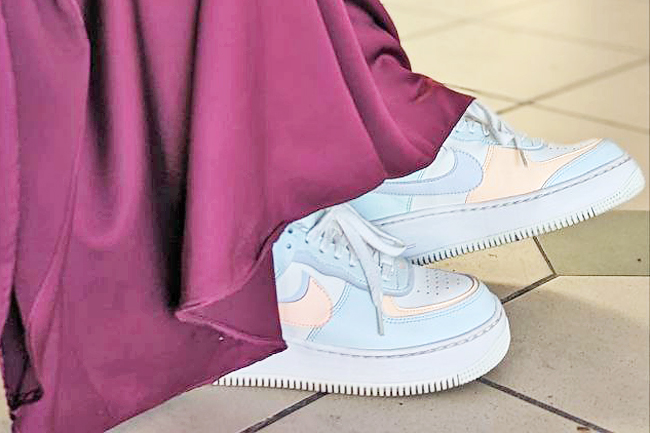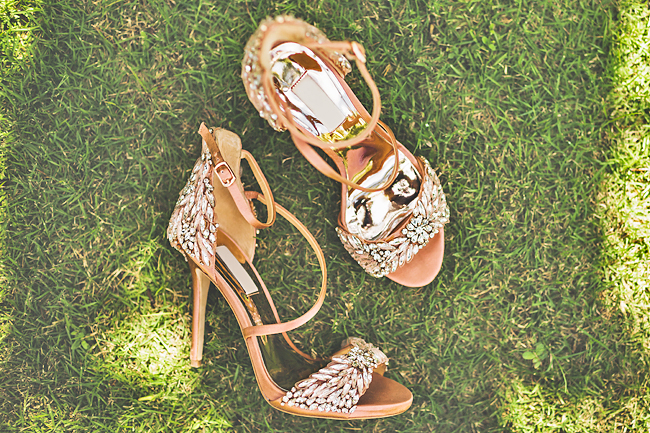CNA – It’s an understatement to say that women suffer for fashion, and one of the many things we wear that give us pain – and yet we willingly bear with – are undoubtedly trendy heels and shoes that don’t fit well and are uncomfortable.
They look great, for sure, but is putting up with the pain worth it, and, more important, will wearing such footwear cause posture, back, leg or foot problems in the long term?
The short answer is yes, if one continues to wear them frequently over long periods of time, according to podiatrists Dr Saw Yu Ting and Jackie Tey from Straits Podiatry.
It comes as no surprise that high heels, including stilettos, are one of the chief culprits behind foot and leg pain, and, worse still, foot deformities.
“Wearing heels direct our centre of pressure forward. Hence, it causes more stress on the ball of the foot and results in issues such as bunions, Morton’s neuroma (inflammation of the digital nerves), metatarsalgia (pain in the ball of the foot), and most commonly, corns and calluses.
“In the long term, wearing heels can also cause adaptive calf tightness. Calf tightness is the main factor that leads to heel pain, such as Achilles tendonitis and plantar fasciitis,” said Dr Saw.
They can even bring about posture and gait issues. “Wearing heels changes the timing of activation of the back muscles. It greatly changes the body’s posture and the way you walk. Over time, this can cause back pain and other lower-limb issues,” added Tey.
Think flats or sneakers are better picks for footwear then, since they are so much easier on the feet, compared to high heels? Not necessarily, said Tey, particularly if they aren’t supportive enough or have a poor fit that doesn’t suit your feet.





“Wearing unsupportive shoes can cause postural issues and joint pain. Unsupportive shoes allow excessive foot joint movements and do not provide a stable platform for a heel-to-toe walking pattern. Similarly, poorly fitted shoes create unnecessary pressure and stress on the foot – for example, shoes that are too narrow will compress our forefoot,” he explained.
So what can a fashion-conscious woman do to prevent these issues from happening down the road?
You might have to ditch those painful heels but you don’t have to throw out your sense of style. CNA Lifestyle gets these podiatrists to share how one can pick out stylish shoes that are kinder to your back and feet by looking out for certain qualities.
BALLET FLATS
They are a classic, comfortable staple in our shoe wardrobe that goes with everything in our clothing wardrobe.
“Most ballet flats have very thin soles, which make them too flexible to support the feet and too thin to provide cushioning. However, there are ballet flats in the commercial market that podiatrists design. They combine aesthetics and functionality, bridging the gap between the need to wear flats (for work, as an example) and enough support. However, if you are unable to find such ballet flats, using a custom insole can help make your flats more supportive,” suggested Dr Saw.
Also, look out for flats with a toe box that accommodates the width of the front of your foot comfortably. A good shoe should also have a flexible toe box that bends only at the ball of the foot and a firm midsole that will not bend or twist.
CHUNKY SNEAKERS
Thick-soled shoes and sneakers continue to trend this year. They look pretty comfortable, but are they all that good for our feet?
Tey agreed that most chunky-soled sneakers have features of supportive shoes, but how stiff the sole is matters.
“If the sole is too soft and flexible, it will allow too many unnecessary joint movements. If it is too firm, it will restrict necessary joint movements. So while we do appreciate that the thick sole allows for increased shock absorption and support, other factors can affect its comfort level and suitability,” he said.
HIGH HEELS
Sorry to disappoint, but heels that do not affect our feet and back simply do not exist. If you must wear them, don’t overdo it.
Dr Saw also suggested a few ways to reduce the impact from wearing heels. “Firstly, try to avoid stilettos, and keep heels to under two inches. Secondly, consider switching to platform heels or wedges, as these shoe styles will not create as much pressure on the forefoot as typical heels will. Thirdly, supposing you like to wear heels daily, doing daily calf and back stretches is vital to maintain good flexibility and reducing injury risk.”
SANDALS
Sandals aren’t known to be supportive since they are mostly flat and strappy. “Some brands of sandals are acceptable as they have the key features of a good shoe as mentioned above.
However, slippers that are completely flat and soft do not provide any structural support or stability, so it is best to avoid them generally,” advised Tey.
SLIP-ONS
“Like ballet flats, most slip-on shoes are too flexible and do not provide ample cushioning.
Some of them do not have appropriate fasteners and cause your feet to move around while in them, increasing friction and shearing forces under the foot,” said Tey.
Want to avoid this problem? Go for slip-ons with fasteners, such as Velcro straps or shoelaces, so that you can adjust the fit. – Tan Wei Lin






